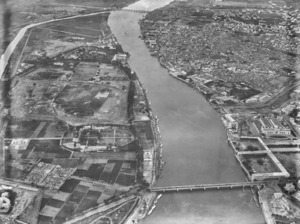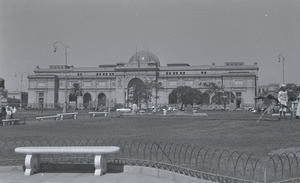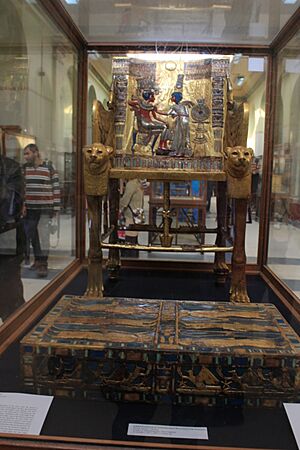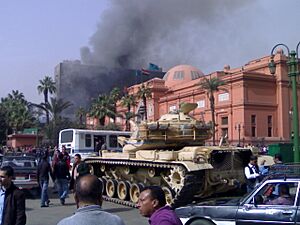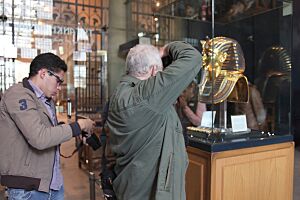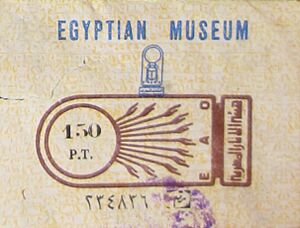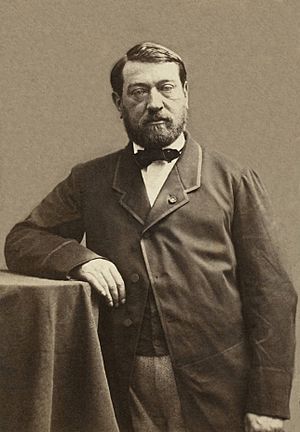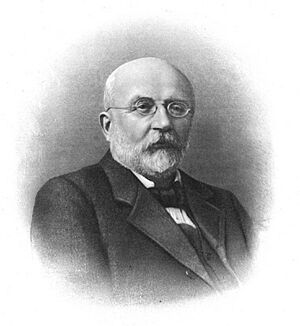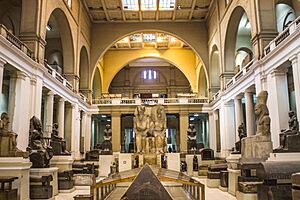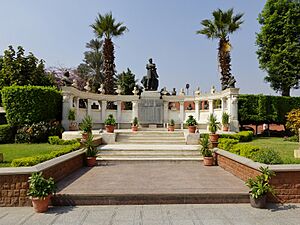Egyptian Museum facts for kids
| المتحف المصري | |
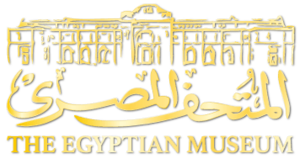 |
|
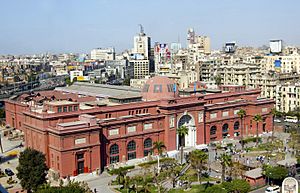 |
|
| Established | 1902 |
|---|---|
| Location | Cairo, Egypt |
| Type | History museum |
| Collection size | 120,000 items |
| Architect | Marcel Dourgnon |
The Egyptian Museum, also known as the Cairo Museum, is located in Cairo, Egypt. It holds the world's largest collection of ancient Egyptian treasures. Imagine over 120,000 items, with many of them on display for you to see!
This amazing museum is in Tahrir Square and was built in 1901. It is the biggest museum in Africa. One of its most famous items is the treasure of Pharaoh Tutankhamun. This includes his incredible gold burial mask, which is famous all over the world. It's a major symbol of ancient Egypt.
Contents
History of the Egyptian Museum
The Egyptian Museum has moved a few times to find its perfect home. The government first started a museum in 1835 near the Ezbekieh Garden. However, this early collection faced problems and even had some items given away.
Later, in 1858, a new museum was set up in Boulaq by Auguste Mariette. This location was temporary. After a flood damaged the building in 1878, Mariette wanted a bigger, safer place for the growing collection.
After Mariette passed away, Gaston Maspero took over. By 1889, the museum was too crowded. There was no space for new discoveries. So, the collections moved to a palace in Giza, which is where the zoo is today.
The artifacts stayed there until 1902. That's when they moved to the museum's current building in Tahrir Square. This building was designed by the French architect Marcel Dourgnon.
Building the Current Museum
The design for the current museum was made in 1897. It was planned for the northern part of Tahrir Square. The first stone was laid on April 1, 1897.
Moving all the ancient treasures from Giza to the new museum was a huge job. It took thousands of wooden carts and even two trains! Large stone coffins, weighing over a thousand tons, were among the first items moved. The move was finished by July 13, 1902.
The Egyptian Museum officially opened its doors on November 15, 1902. The museum was designed to display items in a special way. Large statues were placed on the ground floor. Smaller items, like those from tombs, were on the first floor. The museum was so full of artifacts that it looked like an ancient Egyptian tomb or temple. Every part of the space was used to show off the amazing history.
Modern Times
In 2004, Wafaa El Saddik became the first female director general of the museum.
During the Egyptian Revolution of 2011, the museum was broken into. Some items were damaged, and about 50 objects were stolen. Luckily, many of the missing items were found later. In September 2013, an exhibition called "Damaged and Restored" showed the items that had been fixed. These included statues of King Tutankhamun and King Akhenaten.
Museum Improvements
The museum building was recognized as a special heritage site in 1983 because of its unique design. In 2006, a big project started to make the museum even better. This included adding a cultural center.
In 2012, a plan began to restore the museum to its original beauty. Pollution and traffic had affected its look over the years. This project included fixing the building's architecture and improving the area around Tahrir Square.
The first part of the project involved finding the museum's original color and restoring its walls. They also fixed the decorations and replaced window glass with special glass to protect the artifacts from UV light. The original ventilation system was also restored.
In July 2016, the museum's lighting was improved. This allowed the museum to stay open for visits at night. By November 2018, the museum had a new way of displaying its collections. The treasures of Yuya and Thuya were shown on the upper floor. Many of King Tutankhamun's artifacts were also displayed here. Some of his collection will eventually move to the Grand Egyptian Museum.
Museum Library
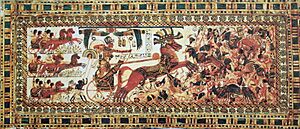
The museum has a library that opened at the same time as the museum. It has over 50,000 books and volumes. These books cover ancient Egyptian, Greek, Roman, and Near Eastern history. The library also has a rare collection of maps, paintings, and photographs.
Museum Collections
The Egyptian Museum has amazing collections from different periods of ancient Egypt.
- Prehistoric Period: This section shows items from before writing was invented. You can see pottery, jewelry, hunting tools, and everyday items.
- The Early Dynastic Period: This collection includes items from the first two dynasties of Egypt. Look for the Narmer Palette and the statue of Khasekhemwy.
- Old Kingdom Period: Here you'll find statues of famous kings like Djoser and Khafre. There are also coffins, wall paintings, and items from Queen Hetepheres I.
- Middle Kingdom Period: This part of the museum has statues of kings like Montuhotep II and Amenemhat III. You can also see treasures from ancient Egyptian princesses, like Mereret.
- New Kingdom Period: This is the most famous collection! It includes the incredible treasures of the young pharaoh Tutankhamun. You can also see statues of Hatshepsut, Thutmose III, and Ramesses II. Until recently, this section also held the Royal Mummy Collection. These royal mummies were moved to the National Museum of Egyptian Civilization in 2021.
- Late Period: This collection features treasures from Tanis made of gold, silver, and precious stones. You can also see statues of kings like Psusennes I and the goddess Tauret.
- Roman Period: This collection includes various artifacts, such as the Dush Treasure found in 1989.
Missing Museum Items
In August 2004, it was announced that 38 artifacts had gone missing from the museum. An investigation was started to find them.
During the unrest in Egypt in January 2011, the museum was broken into. Fifty-four artifacts were stolen. The then-director, Zahi Hawass, said his "heart was broken." Thieves looking for gold damaged about 70 objects. The army quickly surrounded the museum to protect it from further theft.
Pharaohs' Golden Parade
On April 3, 2021, a special event called the Pharaohs' Golden Parade took place. During this parade, 22 royal mummies were moved from the Egyptian Museum. These mummies, including 18 kings and 4 queens, were transferred to the National Museum of Egyptian Civilization in Fustat. They are now displayed in special cases that help keep them safe.
Visiting the Museum
The museum is in the center of Cairo, in Tahrir Square. You can get there by public transport, car, or the metro. The Sadat Metro Station is right next to Tahrir Square.
The museum is open every day from 9:00 AM to 7:00 PM. On Fridays, it has special hours. Usually, you can't use camera flashes inside because they can harm the old artifacts. However, you can pay a fee to take personal photos in most areas. Sometimes, photography is even free to encourage more visitors. You can also rent an audio guide to learn more about the items.
Ticket Prices
Here are the ticket prices in Egyptian pounds:
| Places to visit | Students | Adult | |
|---|---|---|---|
| Ticket price | |||
| Egyptians and Arabs | 10 | 30 | |
| Foreigners | 275 | 550 | |
Children under 6 years old can enter for free.
Museum Leaders
The museum is managed by the Museums Sector of the Supreme Council of Antiquities. Many important people have been directors of the museum, including:
- Auguste Mariette (1858–1881)
- Gaston Maspero (1881–1886)
- Jacques de Morgan (1892–1897)
- Gaston Maspero (1899–1914)
- Pierre Lacau (1914–1936)
- Étienne Drioton (1936–1952)
- Mamdouh Eldamaty (2001–2004)
- Wafaa al-Siddiq (2004–2011)
- Ali Abdelhalim Ali (2023–present)
Inside the Museum
The museum has two main floors. The ground floor has a huge collection of large stone items. These include statues, carvings, and parts of buildings. They are arranged in order from the oldest times to the Roman period.
The first floor is for smaller items. Here you can find ancient papers (papyri), coins, fabrics, and many wooden coffins. The papyri are often small pieces, but they are written in different languages like Greek, Latin, Arabic, and ancient Egyptian. The coins are made of gold, silver, and bronze. They come from Egypt, Greece, Rome, and Islamic times. These coins help historians learn about ancient trade.
The ground floor also has items from the New Kingdom (1550 to 1069 BC). These items are usually bigger than those from earlier times. They include statues, tables, and sarcophagi (coffins). There are 42 rooms on this floor, filled with everything from huge statues to ancient boats.
On the first floor, you'll find items from the last two dynasties of Egypt. This includes treasures from the tombs of pharaohs like Thutmosis III, Hatshepsut, and Tutankhamun. All the amazing items found inside Tutankhamun's tomb are here.
Many collections are being moved to the new Grand Egyptian Museum in Giza. The Egyptian Museum in Tahrir was sometimes criticized for being too crowded. Moving some items will make the experience better for visitors.
Memorial to Famous Egyptologists
In the garden next to the museum, there is a special memorial. It honors famous Egyptologists from around the world. There's a monument to Auguste Mariette, surrounded by busts (head and shoulder sculptures) of 24 other important Egyptologists. These are people who studied and helped us understand ancient Egypt.
See also
 In Spanish: Museo Egipcio de El Cairo para niños
In Spanish: Museo Egipcio de El Cairo para niños
- National Museum of Egyptian Civilization
- Grand Egyptian Museum
- List of largest art museums


